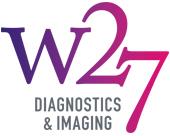Injections are often used to diagnose and treat conditions that affect the shoulder, hip, knee and wrist, including arthritis, torn ligaments and muscles, labral tears and tendonitis.
If anti-inflammatory medication, rest, ice and compression fail to provide sufficient relief, injections are often recommended as the next step in the treatment of inflammatory and degenerative conditions.
Treatment might involve injecting corticosteroids or hyaluronic acid, mixed with anaesthetic, to reduce inflammation and pain around the joint lining or capsule. Injections of Platelet Rich Plasma, Prolotherapy and Stem Cells may be used to promote the body’s natural healing response and a needle can also be used to remove excess fluid from ganglions, cysts and other areas of swelling.
Ultrasound-guided injections
It is important for such injections to be positioned correctly so that they can target the damaged area with pinpoint precision.
Without the use of ultrasound to guide the injection, doctors typically achieve an accuracy level between 63% and 79%. However, ultrasound guidance enables accuracy levels of 90% to 100%. This can help to improve treatment effectiveness and safety.

Benefits of ultrasound guided injections
Ultrasound-guided injections are a quick and minimally-invasive form of treatment that can provide effective short-term pain relief and treatment for joint conditions. Ultrasound uses high-frequency sound waves to produce real-time images of the inside of your body. The procedure is safe and does not involve exposing you to radiation.
Because the radiologist can see the needle entering the joint, he can make minute adjustments to ensure that the medication is accurately injected and reaches the intended target. The ultrasound probe enables them to watch the medication entering the joint and visualise the surrounding structures before, during and after the procedure.
This type of imaging shows both the bony joint and the surrounding soft tissue. It can also show up fluid that may have accumulated in and around joints and other soft tissue structures.
The risks of ultrasound-guided injections are small and are the same as those associated with any type of injection – bleeding, infection or damage to surrounding tissues.
The evidence
A review of literature published in the Orthopaedic Journal of Sports Medicine in February 2018 concluded that ultrasound guidance generally improves the efficacy and cost-effectiveness of many injections. The researchers did, however, warn that studies in the field are limited and they called for more research in this area.
What to expect from your ultrasound guided injection
Ultrasound-guided injections are used to treat soft tissue and joint problems. After going through the consent process you will be asked to lie on the treatment bed. The skin around your affected joint will be cleaned with a sterile solution. Ultrasound is used to identify the precise location of damage in your joint. The consultant radiologist then injects a mix of steroid and anaesthetic, while observing the area on the monitor.
Afterwards, the injection site might feel numb or painful for a while. As the anaesthetic wears off you might experience a temporary increase in pain, however, this should quickly subside. You should use the joint normally after the procedure although it is recommended that you don’t place it under excessive strain for 24-48 hours. Physiotherapy exercises will help to maintain flexibility and improve joint strength.
Who can benefit from ultrasound guided injections?
Ultrasound-guided injections can benefit people with osteoarthritis and rheumatoid arthritis as well as those with soft tissue damage, such as torn ligaments, tendons and muscles.
They can help to diagnose the precise cause of pain and rule out joint infections or gout. They may also be used to treat cysts and ganglions.
Ultrasound guided injections | Manchester, Wigan, Cheshire + more
W27 provides fast, accurate diagnosis of musculoskeletal symptoms and conditions using the latest state-of-the-art imaging facilities.
For your appointment there is a choice of locations:
The John Charnley Wing, Wrightington Hospital – Hall Lane, Appley Bridge, Wigan, WN6 9EP
HCA Manchester Institute of Health & Performance – 299 Alan Turing Way, Manchester, M11 3BS
Euxton Hall Hospital – Wigan Road, Euxton, Chorley, PR7 6DY
The Spire Manchester – 170 Barlow Moor Road, Didsbury, Manchester, M20 2AF
Harley Street Musculoskeletal Clinic – 136 Harley Street, London, W1G 7JZ
The OrthTeam Centre Ohm Building – 168 Barlow Moor Road, Manchester, M20 2AF
Information about our Fees can be found here.
If you have any questions or would like to discuss your options with a specialist, please contact the team to book an initial consultation.











